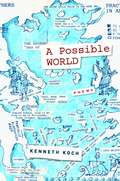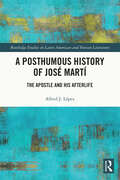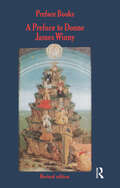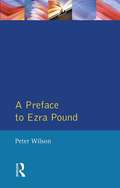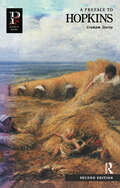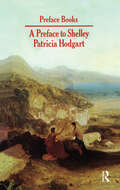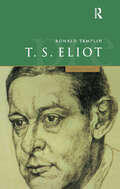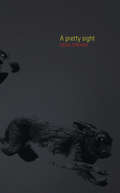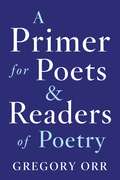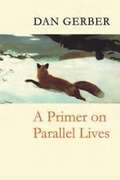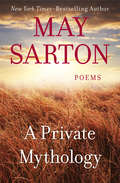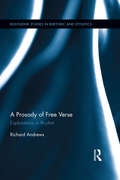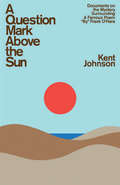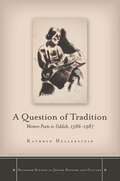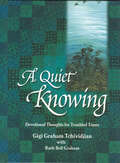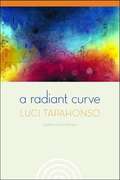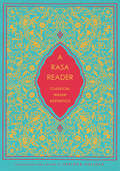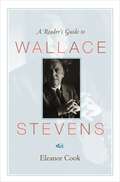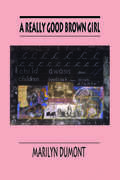- Table View
- List View
A Possible World
by Kenneth Koch"For the last thirty years or more, Kenneth Koch has been writing the most exuberant poems in America. In an arena where such good spirits are rare, he has become a national treasure. In his book of personal addresses to what has mattered most in his seventy-plus years on the planet, there is a dimension of pathos and joy rare in the poetry of any era." --National Book Award (2000) finalist citation for New AddressesThe three long poems -- "Bel Canto," "Possible World," and "A Memoir" -- in this brilliant successor to New Addresses are ambitious attempts at rendering the complete story of a life. Taken together they present a dazzling picture of the pleasures and confusions of existence, as well as the pleasures and difficulties of expressing them. Other poems bring Koch's questioning, lyrical attention to more particular aspects of experience, real and imagined--a shipboard meeting, the Moor not taken, or the unknowable realm of mountaintops. As in all of Koch's work, one hears the music of unconquerable exuberance in stormy conflict with whatever resists it--death, the injustice of power, the vagaries of life in Thailand, China, or Rome. Thomas Disch has written in the Boston Book Review that "Koch is the most capable technician on the American scene, the brightest wit, and the emeritus most likely to persist into the next millennium . . . His work is full of ribaldry and wit, musicianship, pitch-perfect mimicry of the Great Tradition, and the celebration of pleasure for its own sunlit sake."The ebullience and stylistic variety that one has come to expect of this protean poet is everywhere present in this scintillating collection.From the Hardcover edition.
A Posthumous History of José Martí: The Apostle and his Afterlife (Routledge Studies in Latin American and Iberian Literature)
by Alfred J. LópezA Posthumous History of José Martí: The Apostle and His Afterlife focuses on Martí’s posthumous legacy and his lasting influence on succeeding generations of Cubans on the island and abroad. Over 120 years after his death on a Cuban battlefield in 1895, Martí studies have long been the contested property of opposing sides in an ongoing ideological battle. Both the Cuban nation-state, which claims Martí as a crucial inspiration for its Marxist revolutionary government, and diasporic communities in the US who honor Martí as a figure of hope for the Cuban nation-in-exile, insist on the centrality of his words and image for their respective visions of Cuban nationhood. The book also explores more recent scholarship that has reassessed Martí’s literary, cultural, and ideological value, allowing us to read him beyond the Havana-Miami axis toward engagement with a broader historical and geographical tableau. Martí has thus begun to outgrow his mutually-reinforcing cults in Cuba and the diaspora, to assume his true significance as a hemispheric and global writer and thinker.
A Preface to Donne (Preface Books)
by James WinnyProbably the most famous of the Metaphysical poets, John Donne worked with and influenced many of the leading poets of the age. This excellent introduction to his life and works sets his writing firmly in the context of his times.
A Preface to Donne (Preface Books)
by James WinnyProbably the most famous of the Metaphysical poets, John Donne worked with and influenced many of the leading poets of the age. This excellent introduction to his life and works sets his writing firmly in the context of his times.
A Preface to Ezra Pound (Preface Books)
by Peter WilsonProvides an introduction to the life and works of Ezra Pound, a major modernist poet, theorist and literary critic. Throughout his life Pound was regarded by many to be a contentious and controversial figure, and since his death in 1972, theoretical, literary, political and biographical comentators have done much to perpetuate this view. Peter Wilson's survey, however, presents a balanced view of his life and work allowing the reader to judge for themselves. The major sections of the book offer introductions to the complex life and work of Pound, outlining the various cultural, political and literary issues which are important to a full understanding of his place in twentieth century English literature. Critical commentaries are then given on all of Pound's major poetry, adopting some analytical techniques from stylistics. Brief biographies of important figures in Pound's career, and in the development of literary modernism are provided. A gazeteer, glossary, and suggestions for further reading complete the book.
A Preface to Hopkins (Preface Books)
by Graham StoreyAn authoritative guide to the life and works of Hopkins, for those who require a good introduction from which to explore the author's works more fully.
A Preface to Hopkins (Preface Books)
by Graham StoreyAn authoritative guide to the life and works of Hopkins, for those who require a good introduction from which to explore the author's works more fully.
A Preface to Shelley (Preface Books)
by P. HodgartThis volume discusses the life and work of Percy Bysshe Shelley in the social and political context of the world and time in which he lived.
A Preface to Shelley (Preface Books)
by Patricia HodgartThis volume discusses the life and work of Percy Bysshe Shelley in the social and political context of the world and time in which he lived.
A Preface to T S Eliot (Preface Books)
by Ron TamplinT. S. Eliot is arguably the most influential poet of the 20th century, and The Waste Land one of its most significant poems. This introduction to the life and works of T.S. Eliot sets his writing clearly in the context of his times. Outlining his life and cultural background and their effect on his work, Ronald Tamplin examines his poetry and focuses in detail on three major works: The Waste Land, Four Quartets and the play, Murder in the Cathedral.
A Preface to T S Eliot (Preface Books)
by Ron TamplinT. S. Eliot is arguably the most influential poet of the 20th century, and The Waste Land one of its most significant poems. This introduction to the life and works of T.S. Eliot sets his writing clearly in the context of his times. Outlining his life and cultural background and their effect on his work, Ronald Tamplin examines his poetry and focuses in detail on three major works: The Waste Land, Four Quartets and the play, Murder in the Cathedral.
A Pretty Sight
by David O'Meara?Like the rhapsodes, the storytellers of ancient Greece, A Pretty Sight shapes voices of the past and present into a stitched song lifted toward the next century. Haunted by 'that dark shape near the edge of the canvas,' David O'Meara's new book channels Sid Vicious, Socrates, Sophie Scholl and others to find - through art and rebellion - defiance amid decay.
A Primer for Poets and Readers of Poetry
by Gregory OrrAn innovative and accessible guide to poetry-writing by an award-winning poet and beloved professor of poetry. A Primer for Poets and Readers of Poetry guides the young poet toward a deeper understanding of how poetry can function in his or her life, while also introducing the art in an exciting new way. Using such poems as Theodore Roethke’s "My Papa’s Waltz" and Robert Hayden’s "Those Winter Sundays," the Primer encourages young writers to approach their "thresholds"—those places where disorder meets order, where shaping imagination can turn language into urgent and persuasive poems. It provides the poet with more than a dozen focused writing exercises and explains essential topics such as the personal and cultural threshold; the four forces that animate poetic language (naming, singing, saying, imagining); tactics of revision; ecstasy and engagement as motives for poetry; and how to locate and learn from our personal poetic forebears.
A Primer on Parallel Lives
by Dan Gerber"Dan Gerber tenderly reels his readers through the 'beautiful movie' he calls the passing of time on earth in a language completely unadorned and Zen-like in its quietude. The thing itself carries the weight of these poems, which recall the deep imagery of Vallejo, Neruda and Wright."--Rain Taxi Dan Gerber is a master of layered, bittersweet imagery. In his seventh book of poems, he writes of childhood misgivings and fears, the oak savannah landscape of California's central coast, and a near-mystical relationship with nature. As novelist John Nichols once wrote of Gerber's poetry, "Dan Gerber has an exquisitely muted, yet profound understanding of tragedy, love, family, and the haunting vagaries of nature." "Some Distance" I wanted to be a stone in the field, simply that, and then I wanted to be the grass around it, and then the cattle grazing under the too blue sky,and then the blue, which has of itself no substance,and yet goes on and on and on. Dan Gerber is the author of a dozen books of poetry, fiction, essays, and memoir. He has earned the Mark Twain Award, Book of the Year honors from ForeWord Magazine, and inclusion in The Best American Poetry. He lives in Santa Ynez, California.
A Private Mythology: Poems
by May SartonStunning reflections chronicling a journey both spiritual and physical by May Sarton, one of America&’s most beloved poetsIn celebration of her fiftieth birthday, May Sarton embarked on a pilgrimage around the world. Traveling through Japan, India, and Greece, she captured her spiritual discoveries in this vivid collection of poetry. Arresting images and meditations on the differences between East and West are rendered with the exceptional clarity of an accomplished artist.Winner of the Emily Clark Balch Prize.
A Prosody of Free Verse: Explorations in Rhythm (Routledge Studies in Rhetoric and Stylistics)
by Richard AndrewsThere is to date no comprehensive account of the rhythms of free verse. The main purpose of A Prosody of Free Verse: explorations in rhythm is to fill that gap and begin to provide a systematic approach to describing and analyzing free verse rhythms. Most studies have declared the attempt to write such a prosody as impossible: they prefer to see free verse as an aberrant version of regular metrical verse. They also believe that behind free verse is the ‘ghost of metre’. Running against that current, A Prosody of Free Verse bases its new system on additive rhythms that do not fit conventional time signatures. Inspiration is taken from jazz, contemporary music and dance, not only in their systems of notation but in performance. The book argues that twentieth and twenty-first century rhythms in poetry as based on the line rather than the metrical foot as the unit of rhythm , and that larger rhythmic structures fall into verse paragraphs rather than stanzas.
A Question Mark Above the Sun
by David Koepsell Eric Lorberer Kent Johnson"At the end of last year, an extraordinary work of detective criticism briefly appeared, despite legal threats. Kent Johnson's A Question Mark Above the Sun (Punch Press) movingly speculates that Kenneth Koch forged one of Frank O'Hara's greatest poems as a posthumous tribute to his friend. A noir-ish middle also recounts some very funny run-ins with the English avant-garde. Shame on the poets who forced its redaction and suppression." - Jeremy Noel-Tod, The Times Literary Supplement, including a previous edition of A Question Mark Above the Sun as one of its 2011 Books of the YearWhat you have in your hands is a kind of thought-experiment. It proffers the idea that a radical, secret gesture of poetic mourning and love was carried out by Kenneth Koch in memory of his close friend Frank O'Hara. I present the hypothesis as my own very personal expression of homage for the two great poets. The proposal I set forward here, nevertheless, is likely to make some readers annoyed, perhaps even indignant. Some already are. A few fellow writers, even, have worked hard through legal courses to block this book's publication. The forced redaction of key quotations herein (replaced by paraphrase) is one result of their efforts.In this self-described "thought experiment"-part fiction, part literary detective work, and always daring-Kent Johnson proposes a stunning rewrite of literary history. Suppressed upon initial release, this is a one-of-a-kind book by one of our most provocative contemporary authors.Kent Johnson is the author, translator, or editor of over thirty books of poetry and criticism, including Beneath a Single Moon: Buddhism in Contemporary American Poetry (Shambhala Publications, 1991), Doubled Flowering: From the Notebooks of Araki Yasusada (Roof Books, 1998), and his most recent collection of poems, Homage to the Last Avante-Garde (Shearsman Books, 2008). Best known for his radical ideas about authorship, scholarship, and experimentation, it was with his translations of Hiroshima survivor poet Araki Yasusada that Johnson became both celebrated and castigated. Only after Yasusada's poems were published in American Poetry Review did readers learn there was no Yasusada, and that Johnson was not a translator on this project, but the author. Johnson is the recipient of a National Endowment for the Arts Literature Fellowship in Translation. He lives in Illinois, where he is a faculty member in English and Spanish at Highland Community College.
A Question of Tradition: Women Poets in Yiddish, 1586-1987
by Kathryn HellersteinIn A Question of Tradition, Kathryn Hellerstein explores the roles that women poets played in forming a modern Yiddish literary tradition. Women who wrote in Yiddish go largely unrecognized outside a rapidly diminishing Yiddish readership. Even in the heyday of Yiddish literature, they were regarded as marginal. But for over four centuries, women wrote and published Yiddish poems that addressed the crises of Jewish history#151;from the plague to the Holocaust#151;as well as the challenges and pleasures of daily life: prayer, art, friendship, nature, family, and love. Through close readings and translations of poems of eighteen writers, Hellerstein argues for a new perspective on a tradition of women Yiddish poets. Framed by a consideration of Ezra Korman's 1928 anthology of women poets, Hellerstein develops a discussion of poetry that extends from the sixteenth century through the twentieth, from early modern Prague and Krakow to high modernist Warsaw, New York, and California. The poems range from early conventional devotions, such as a printer's preface and verse prayers, to experimental, transgressive lyrics that confront a modern ambivalence toward Judaism. In an integrated study of literary and cultural history, Hellerstein shows the immensely important contribution made by women poets to Jewish literary tradition.
A Quiet Knowing: Devotional Thoughts for Troubled Times
by Gigi Graham Tchividjian Ruth Bell GrahamRuth Bell Graham and her daughter Gigi Graham Tchividjian have created a devotional journal that will lead the reader to discover and experience the meaning of serenity. Selecting favorite hymns such as "Just As I Am" and "Be Thou My Vision," the Graham women offer stories and insights inspired by the songs and thoughtful messages. This devotional addresses such topics as:Discouragement: The Devil's Calling CardMaking Decisions: Searching for God's WillBusiness: Responding to ExpectationsBelongings: Weighing our wants and needsWeights: Balancing Daily BurdensWaiting: Proving God's FaithfulnessValleys: Finding Peace in Down Times* Web Description
A Radiant Curve: Poems and Stories
by Luci TapahonsoIn this sixth collection of stories and verse, award-winning writer Luci Tapahonso finds sacredness in everyday life. Viewing a sunset in a desert sky, listening to her granddaughter recount how she spent her day, or visiting her mother after her father's passing, she finds traces of her own memories, along with echoes of the voices of her Navajo ancestors. These engaging words draw us into a workaday world that, magically but never surprisingly, has room for the Diyin Dine'é (the Holy People), Old Salt Woman, and Dawn Boy. When she describes her grandson's First Laugh Ceremony-explaining that it was originally performed for White Shell Girl, who grew up to be Changing Woman-her account enriches us and we long to hear more. Tapahonso weaves the Navajo language into her work like she weaves "the first four rows of black yarn" into a rug she is making "for my little grandson, who inherited my father's name: Hastiin Tsétah Naaki Bísóí. " As readers, we find that we too are surrounded by silent comfort, held lovingly in the confident hands of an accomplished writer who has a great deal to tell us about life.
A Rasa Reader: Classical Indian Aesthetics (Historical Sourcebooks in Classical Indian Thought)
by Sheldon PollockFrom the early years of the Common Era to 1700, Indian intellectuals explored with unparalleled subtlety the place of emotion in art. Their investigations led to the deconstruction of art's formal structures and broader inquiries into the pleasure of tragic tales. Rasa, or taste, was the word they chose to describe art's aesthetics, and their passionate effort to pin down these phenomena became its own remarkable act of creation.This book is the first in any language to follow the evolution of rasa from its origins in dramaturgical thought—a concept for the stage—to its flourishing in literary thought—a concept for the page. A Rasa Reader incorporates primary texts by every significant thinker on classical Indian aesthetics, many never translated before. The arrangement of the selections captures the intellectual dynamism that has powered this debate for centuries. Headnotes explain the meaning and significance of each text, a comprehensive introduction summarizes major threads in intellectual-historical terms, and critical endnotes and an extensive bibliography add further depth to the selections. The Sanskrit theory of emotion in art is one of the most sophisticated in the ancient world, a precursor of the work being done today by critics and philosophers of aesthetics. A Rasa Reader's conceptual detail, historical precision, and clarity will appeal to any scholar interested in a full portrait of global intellectual development. A Rasa Reader is the inaugural book in the Historical Sourcebooks in Classical Indian Thought series, edited by Sheldon Pollock. These text-based books guide readers through the most important forms of classical Indian thought, from epistemology, rhetoric, and hermeneutics to astral science, yoga, and medicine. Each volume provides fresh translations of key works, headnotes to contextualize selections, a comprehensive analysis of major lines of development within the discipline, and exegetical and text-critical endnotes, as well as a bibliography. Designed for comparativists and interested general readers, Historical Sourcebooks is also a great resource for advanced scholars seeking authoritative commentary on challenging works.
A Reader's Guide to Wallace Stevens
by Eleanor CookWallace Stevens is one of the major poets of the twentieth century, and also among the most challenging. His poems can be dazzling in their verbal brilliance. They are often shot through with lavish imagery and wit, informed by a lawyer's logic, and disarmingly unexpected: a singing jackrabbit, the seductive Nanzia Nunzio. They also spoke--and still speak--to contemporary concerns. Though his work is popular and his readership continues to grow, many readers encountering it are baffled by such rich and strange poetry. Eleanor Cook, a leading critic of poetry and expert on Stevens, gives us here the essential reader's guide to this important American poet. Cook goes through each of Stevens's poems in his six major collections as well as his later lyrics, in chronological order. For each poem she provides an introductory head note and a series of annotations on difficult phrases and references, illuminating for us just why and how Stevens was a master at his art. Her annotations, which include both previously unpublished scholarship and interpretive remarks, will benefit beginners and specialists alike. Cook also provides a brief biography of Stevens, and offers a detailed appendix on how to read modern poetry. A Reader's Guide to Wallace Stevens is an indispensable resource and the perfect companion to The Collected Poems of Wallace Stevens, first published in 1954 in honor of Stevens's seventy-fifth birthday, as well as to the 1997 collection Wallace Stevens: Collected Poetry and Prose.
A Really Good Brown Girl
by Marilyn DumontMarilyn Dumont’s Metis heritage offers her challenges that few of us welcome. Here she turns them to opportunities: in a voice that is fierce, direct, and true, she explores and transcends the multiple boundaries imposed by society of the self. She mocks, with exasperation and sly humour, the banal exploitation of Indianness (“there it is again, the circle, that goddamned circle, as if we thought in circles, judged things on the merit of their circularity, as if all we ate was bologna and bannock and lived in teepees”); more-Indian-than-thou oneupmanship (“So, I’m having coffee with this treaty guy from up north … I say I’m Metis like it’s an apology and he says, ‘mmh,’ like he forgives me, like he’s got a big heart and mine’s pumping diluted blood”); and white condescension and ignorance (“The White Judges”). She celebrates the person, clearly observing, who defines her own life. These are Indian poems; Canadian poems; human poems.
